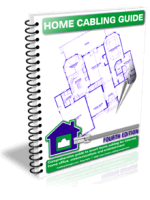| How to connect several remote computers and outdoor kiosks |
If you have one or
several remote work areas (WA) that
have to be conneccted to a
cross-connect in another building
within short distance (up to 90 m),
you may use one of two options:
- Using outside Category 5 UTP cable;
- Using wireless LAN system operating
in an unlicensed band.
Using
outdoor Category 5 UTP cable
----------------------------------
In this case you install outside
Category 5 UTP cable between two
buildings using either aerial
placement or underground conduits.
On every side where outside cable
enters the building you have to
install special Category 5-rated
protectors. Standard telephone
protectors will not pass through the
high-frequency network signal and,
therefore, they are not suited for
this application. Check Category 5
compliancy of protectors with the
manufacturer. Do not forget to ground
the protectors accordingly.
Be sure that the total cable length
between the interconnection point and
WA outlet does not exceed 90 m as it
is dictated by the maximum horizontal
cable length. Be sure that the total
channel length does not exceed 100 m.
ALways check that outside Cat5 cable
is fire rated. If it is not, then
this cable may not penetrate into the
building more than 50 ft. If you need
more penetration, then use a metal
conduit.
Using
wireless LAN system
-------------------------
You may want to connect remote users
by using a wireless LAN system
operating in an unlicensed RF band.
In this case the following equipment
is used:
- two wireless bridges
- two directional antennas
- wireless LAN NIC
A wireless bridge is installed in
each buildings and provides wireless
point-point connectivity between
buildings.
Directional antennas are connected to
wireless bridges using special
antenna cables and installed either
outside or inside of the building.
The direct visibility between
antennas must be present.
In general, you may choose between
two wireless LAN technologies:
- Direct Sequence Spread Spectrum
(DSSS)
- Frequency Hopping Spread Spectrum
(FHSS)
Each technology has its own
advantages and disadvantages. DSSS
can provide more performance (up to
11 Mbit/s), while FHSS is somewhat
more resistive to interference, but
has limited speed capabilities (up to
3 Mbit/s).
Before buying a wireless LAN
solution, always make a test run. The
bands, in which these systems
operate, are unlicensed, so there is
a possibility that another wireless
network in your area is already
operating and can degrade your
wireless network performance.
There are many manufacturers
producing wireless LAN solutions. We
tried and have good experience with
two of them:
- Aironet (http://www.aironet.com)
- Lucent Technologies' WaveLAN (http://www.wavelan.com)
|
|
| Back to Designer's Tips |

Home Cabling Guide
Finally, an instantly downloadable book that saves you thousands in home improvement dollars!
Enjoy living in 21st century technology-advanced home while increasing its selling value and competitive advantage
on the real estate market. Whether your cabling is for home office or high-tech
leisure, you can wire your home yourself or learn "wirish" to speak with your cabling contractors in their language!

